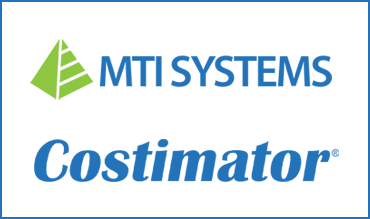-
-
Phone: 413-733-1972
IBM Focuses on Cutting Procurement Costs
Requiring thousands upon thousands of specialized parts, IBM saves big by implementing "real cost" software

AS THE WORLD'S largest maker of computers, IBM produces a vast array of hardware, including customized equipment such as this "Rapid Check-In" kiosk for use at airports. Specialized parts-procurement software allows IBM to aggressively monitor and negotiate the price of components used by all of its manufacturing divisions. (Photo courtesy of Southwest Airlines Co.
IBM, which seems always to be on the leading edge—both in its products and in its business processes—is now well into its second year of using Costimator OEM, a powerful piece of software that helps IBM put a razor edge on its procurement processes. Implemented as part of IBM's massive, ongoing transformation of its supply chain, Costimator has generated savings at the company's manufacturing sites worldwide, including plants in North America, Scotland, Germany, and numerous other countries.
IBM's supply chain begins with product design and includes processes for lead management, the creation of customer proposals, component sourcing, procurement, manufacturing, fulfillment, customer service, billing, accounts receivable, and aftermarket services. In 2003, improvements in supply-chain management reduced IBM's cost and expense by more than $7 billion. Its Integrated Supply Chain unit, with 19,000 people, is the firm's fourth largest division.
IBM determined that it needed to implement uniform, predictable costing strategies as a means of comparing manufacturing costs on a global basis. Costimator accomplishes this by allowing all of the firm's hardware divisions to define, break down, and quantify the true cost of every part of every product.
For instance, to perform a real-cost estimate on a particular part, Costimator breaks down both the time to manufacture a part and the cost of the supplier's labor or shop time. Manufacturing times are generated through process or parametric estimating methods within the software. Labor rates are calculated through the program's Shop Rate Calculator & Trade feature, using current labor rates, as reported on W-2 forms, from the Bureau of Labor and Statistics, along with other default factors to produce accurate supplier shop rates. Reliable rates are available for all US states as well as for most foreign countries. Combining shop rates with detailed, real-world manufacturing times, also resident in the software, the manufacturer is able to accurately assess a part's true cost of labor.
On the materials side, Costimator's Material database allows the user to store and maintain relevant data on commonly used raw stock. The database can be populated by selecting options from a library of over 2000 materials. Available shapes and sizes of the various materials can be maintained, along with price by weight, piece, or other metrics. Additionally, machining data such as speed and feed rates can be maintained as needed.

MYRIAD COMPONENTS are required by IBM to manufacture specialty products, such as this "Kidsmart Young Explorer" station. Costimator, from MTI Systems, analyzes labor and materials costs of each part. (Photo courtesy of International Business Machines Corp.)
"Costimator provides labor rates, material rates, and material costs that are resident within the software," said John Kagan, manager, PC Cost Management, at IBM. "We update these on a regular basis. Also, we have process standards, and we use those to construct a bottom-up estimate for a given part or assembly. That information is then used to help establish our total cost-of-product estimate for planning purposes as well as benchmark with competitive info.
"We use the benchmarks to help negotiate with our suppliers. ... We can evaluate functional or design differences to determine whether there are opportunities for us, or to determine whether one design might be better than another. Plus, we can compare whether it's better to go with multiple suppliers or to consolidate vertically with one supplier," he said.
According to Tom Charkiewicz, founder and Chief Technology Officer of MTI Systems, currently the prices OEMs pay for parts are "market prices," or the price the market bears at that given point in time, regardless of the actual or real cost of making the part. Now, after receiving accurate costing data through a computer-aided cost estimating (CACE) system, purchasing agents are able to use the information to set realistic target prices for formulating and sending out RFQs to their suppliers. The end result is a more efficient and cost-effective RFQ process and, ultimately, lower purchase part costs.
Contract manufacturers also are benefiting from "real cost" applications, said Mr. Charkiewicz, using their CACE systems to an advantage when negotiating with their OEM customers. Detailed cost-estimating reports can be used to justify quotes, thereby holding or even increasing profit margins.
Mr. Kagan noted that Costimator was relatively easy to learn. Personnel from MTI provided training for IBM's designated in-house experts at a central location. Those experts then took their knowledge back with them to their respective sites worldwide and trained fellow users.

ZEROING IN on brass-tacks costs, Costimator analyzes diverse factors involved with specific manufacturing operations and generates for IBM managers a variety of at-a-glance charts, such as these two, which, respectively, display cost in dollars and time required (in minutes) for a given part. In these charts (example only, not from IBM), the numbers "10, 20, (etc.)" correspond to specific activities. "10," for example, stands for "Laser Cut," while "50" designates "welding"; these details are displayed on the monitor, next to the actual charts, for easy reference by the user. Graphic courtesy of MTI Systems.
Transitioning from the legacy cost-estimating system to Costimator was relatively painless. Specifications and various other data were batch-transferred into the new software, neatly sidestepping the re-keyboarding of large amounts of data.
IBM installed Costimator in late fall of 2002. Residing on servers located in Endicott, NY, the software is accessed by the company's numerous manufacturing teams around the world, which manufacture the firm's vast array of hardware product lines, including servers, personal systems, printers, and retail store systems. Communication between the sites producing all these products and the servers in Endicott is done over the company's Intranet.
During the first year and a half that Costimator has been online at IBM, it has become an integral part of the company's procurement process. According to Mr. Kagan, savings have already climbed into "the tens of millions of dollars," and the Costimator's array of functions and features makes possible complex operations within the procurement process. For instance, the Work Center Database allows personnel to store and maintain data about their machines or departments. It includes the labor and burden rates for set up and cutting times, and also makes allowances for such things as operator fatigue, machine capabilities for performance, and operator standards outside the machine cycle.
The software's Plant Database enables users to link cost information such as purchase items, materials costs, and labor rates to individual plants, facilitating cost comparisons based on differing factors from plant to plant.
Other databases include IQBuilder, which lets the user store and retrieve data into an estimate via two methods (linear calculation and regression analysis); the Vendor Database; the Customer Database; the standards Database, which comes with over 3000 pre-determined elements; the Purchased Items Database; and the Material Handling Database, which enables users to define time elements to account for the movement of raw material and part stock during manufacturing.
Currently, IBM is using Costimator primarily in a stand-alone capacity, though it has been phased into other areas of the enterprise. For instance, notes Mr. Kagan, the software is used to validate certain costs associated with production. It can also be used to evaluate engineering changes to see their effect on cost, and to see if those changes are justified.
Looking ahead, IBM anticipates using Costimator in other applications within its manufacturing environment. For example, said Mr. Kagan, the software has a CAD interface, and IBM is exploring the feasibility of integrating that function.
Copyright © 2004 Helmers Publishing, Inc. All rights reserved.

Costimator®
Cost Estimating Software for Manufacturing
-
Cost Estimating Sheet Metal
-
Estimating for Machined Parts
-
Quoting for Machining and Fabrication




